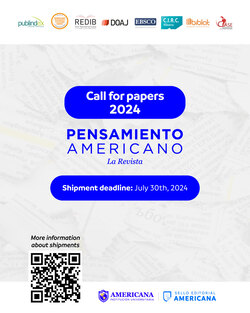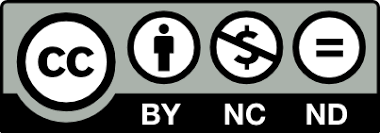Characterization of cybercrime in Colombia
DOI:
https://doi.org/10.21803/pensam.v5i9.147Keywords:
Delitos, Tecnologías, Internet, Información, SeguridadAbstract
Resumen
Es evidente que los avances tecnológicos demuestran la evolución del hombre, y eso lo podemos comprobar a través de los medios que permiten el almacenamiento, la transmisión y la administración de la información. Avances que han modificado el vivir diario de las personas y de las organizaciones, las cuales reflejan el aumento de transacciones comerciales, comercio electrónico, comunicaciones en línea, los procesos industriales, las investigaciones, la seguridad, la sanidad, etc., pero los sistemas de información que han permitido mejorar ostensiblemente los procesos al interior de las organizaciones, son los que al mismo tiempo han generado una serie de comportamientos ilícitos, que se les denomina “Delitos Informáticos”, y es el tema a abordar en este artículo de investigación, que se enmarca dentro del proyecto interdisciplinar titulado La seguridad en los Delitos informáticos desarrollado por estudiantes y docentes de los programas de Derecho e Ingeniería de Sistemas de la Corporación Universitaria Americana.
Abstract
It is clear that technological advances show the evolution of man, and we can check through the means for storage, transmission and information management. Advances that have changed the daily lives of individuals and organizations, which reflect increased business transactions, electronic commerce, online communications, industrial processes, research, safety, health, etc. , But systems information that allowed significantly improve processes within organizations are at the same time have created a series of unlawful conduct, which is called “ Computer Crimes “ and is the subject addressed in this research article, that is part of the interdisciplinary project entitled security in cybercrime developed by students and teachers of law programs and Systems Engineering of the American University Corporation.
Downloads
References
División de Investigación y Desarrollo del Consejo Nacional de la Prevención del Delito.(1981). Informática y Delito. Estados Unidos.
Grupo Investigativo de Delitos Informaticos - GRIDI. (2009). Investigación tecnológica de los Delitos Informaticos. Bogota.
Guerra, B. J. Consideraciones para la regulación penal del delito informático. Sexta Ponencia: Delitos Informáticos - Abogacia e Informática (pág. 3). Colegio de Abogados.
Perrin, S. (2005). Palabras en Juego: Enfoques Multiculturales sobre las Sociedades de la Información. Estados Unidos: C & Editions.
Redaccion Tecnologica de El Tiempo. (2011). Cada segundo hay 18 victimas de Ciberdelitos. El Tiempo.
Soiarz. (1990). Tecnologia Informatica y la Transformacion de la Criminalidad. Informe Nacional Sueco Presentado al XIII Congreso Internacional de Derecho Comparado, (págs. 285, 292). Suecia.
Taber, J. (1980). Una encuesta de los estudios de delitos informáticos . Estados Unidos: Informatica y Derecho Journal.
Tellez, V. J. (2005). Derecho Informatico. Mexico: Universidad Nacional de Mexico.
Tiedemann, K. (1983). La criminalidad económica como objeto de investigación. Cuadernos de Politica Criminal , 173 - 196.
Wiener, N. (1980). Cibernetica y Sociedad. Mexico: Editorial Mexico.
Acurio, S. Delitos Informáticos: generalidades. Recuperado en www.colombiadigital.net
Cuervo, J. Delitos Informáticos y Protección Penal a la Intimidad. Recuperado en www.derecho.org
Salellas, L. Sr Hadden Security Consulting. Recuperado en http://www.sr-hadden.com.ar Salt, M. Informática y Delito. Recuperado en http://www.derecho.org.ar
Ley 1273 de 2009.
Downloads
Published
Issue
Section
License
Copyright (c) 2012 Pensamiento Americano

This work is licensed under a Creative Commons Attribution-NonCommercial-NoDerivatives 4.0 International License.
The author or authors of an article accepted for publication in the Journal Pensamiento Americano will transfer all of the patrimonial rights to the American University Corporation free of charge, within which are included: the right to edit, publish, reproduce and distribute both print media as digital, in addition to include in article in international indexes and / or databases, likewise, the Editorial Seal is authorized to use the images, tables and / or any graphic material presented in the article for the design of covers or posters from the same magazine. By assuming the patrimonial rights of the article, it may not be partially or totally reproduced in any printed or digital media without its express permission.
AUTHORITY ASPECTS
For the Pensamiento Americano Journal, all the authors of an article have made substantial contributions to the research and the manuscript, and they share the responsibility when the article presents errors, fraud in some way or violations of copyright.
After submitting an article, the journal does not accept the addition, deletion or change in the order of the authors, in addition we reserve the right to release the article when it has been submitted to the journal and under no circumstances will American Thought accept the article. withdrawal of an article during any phase of the editorial process






